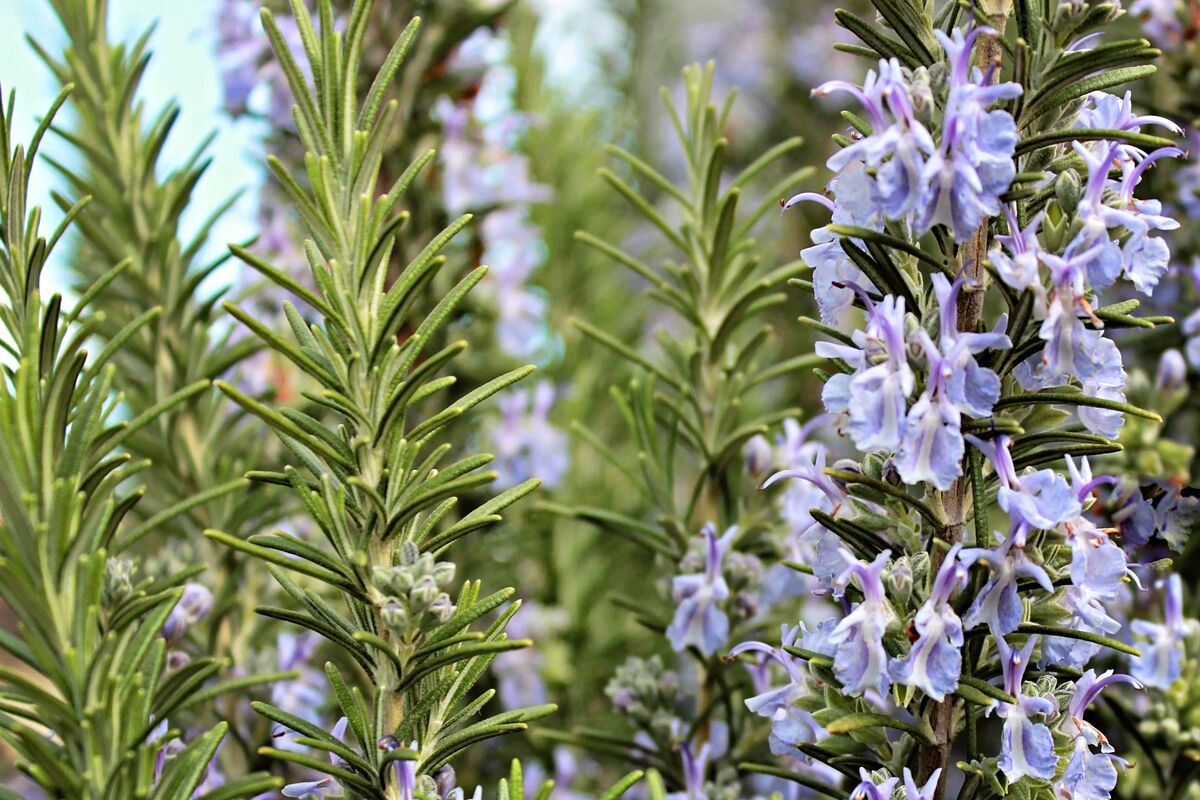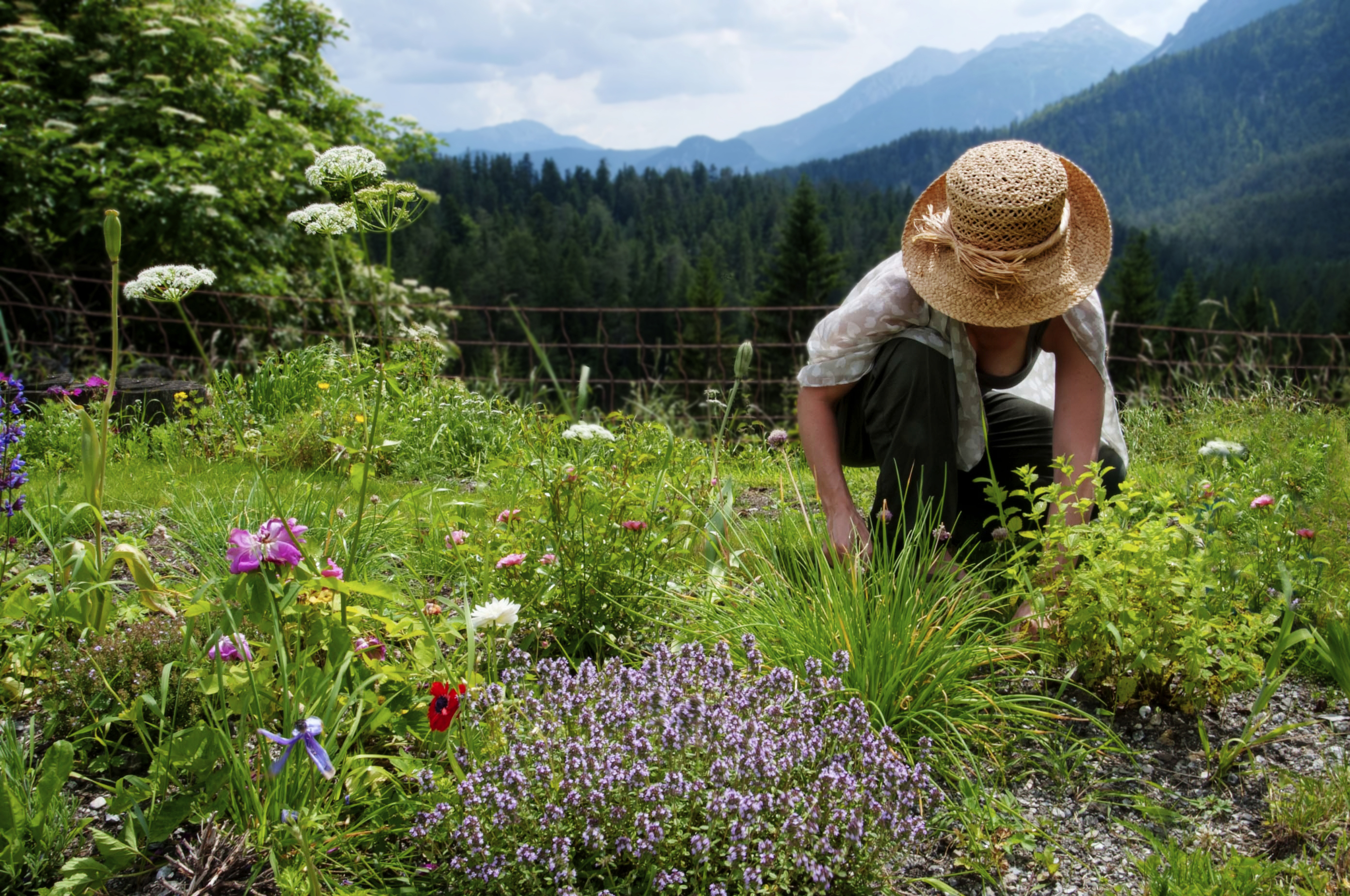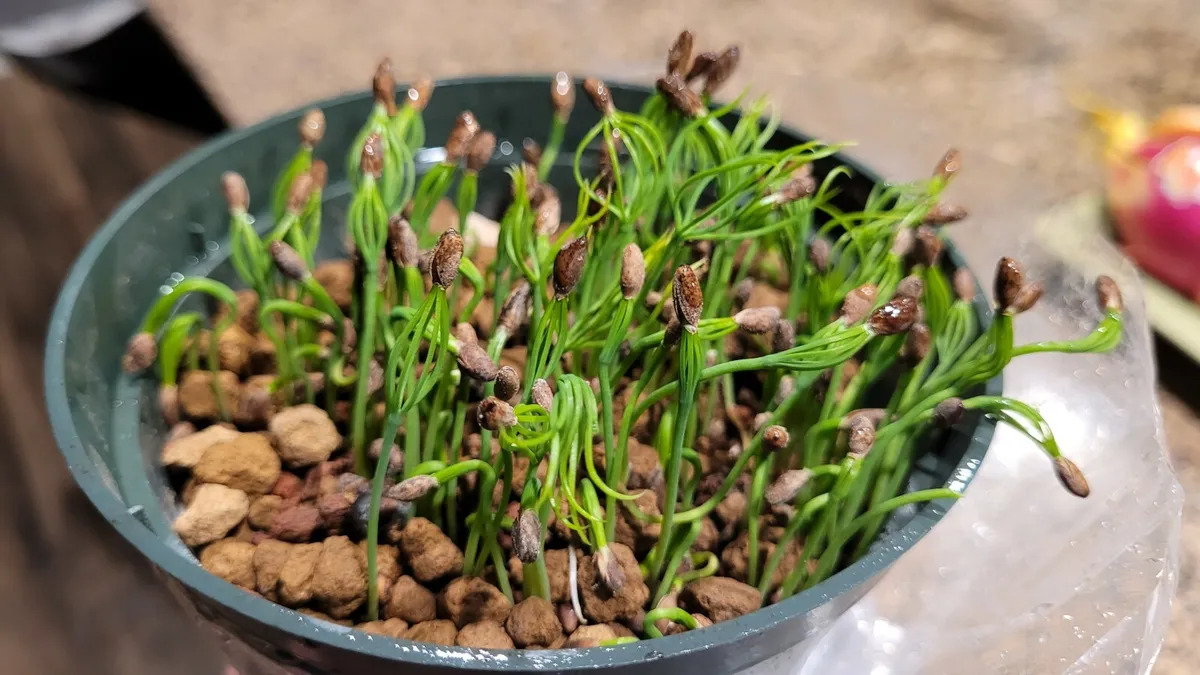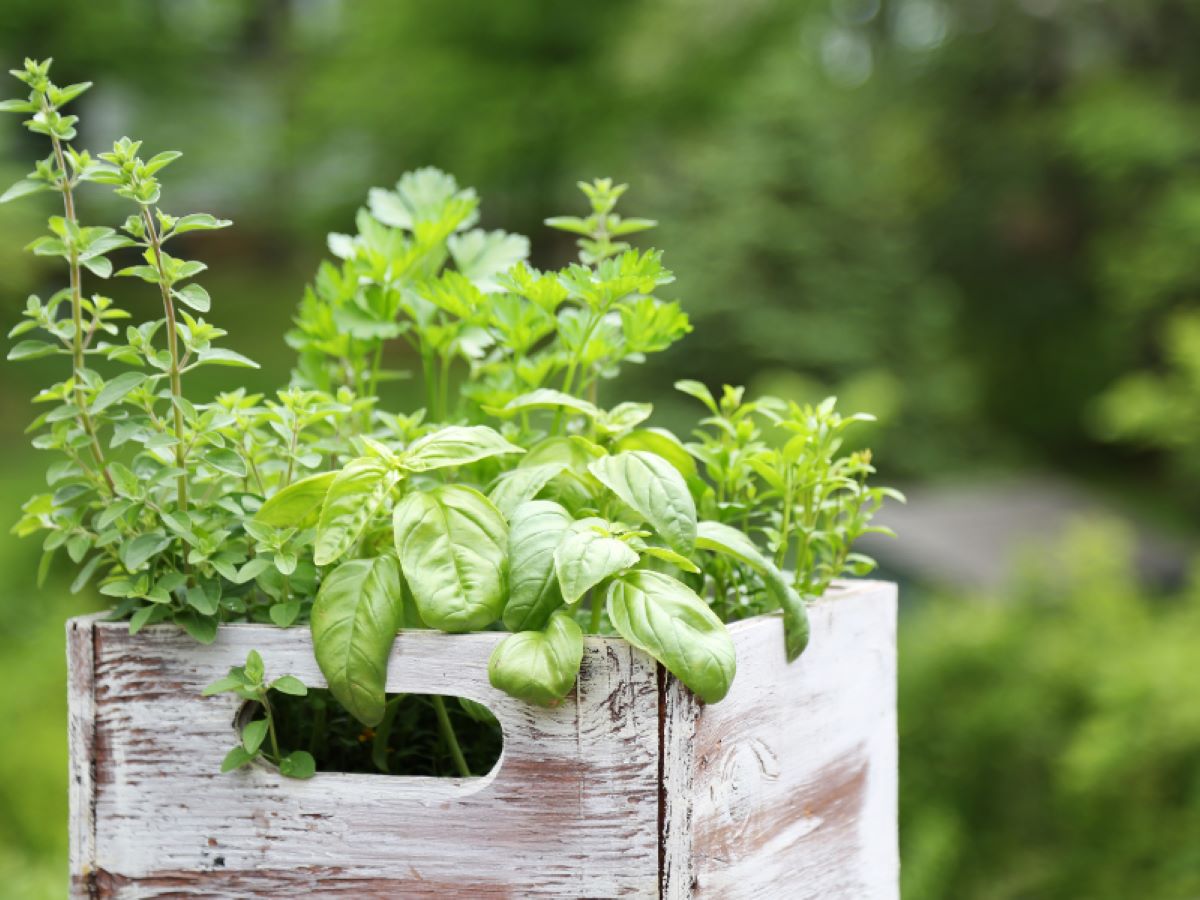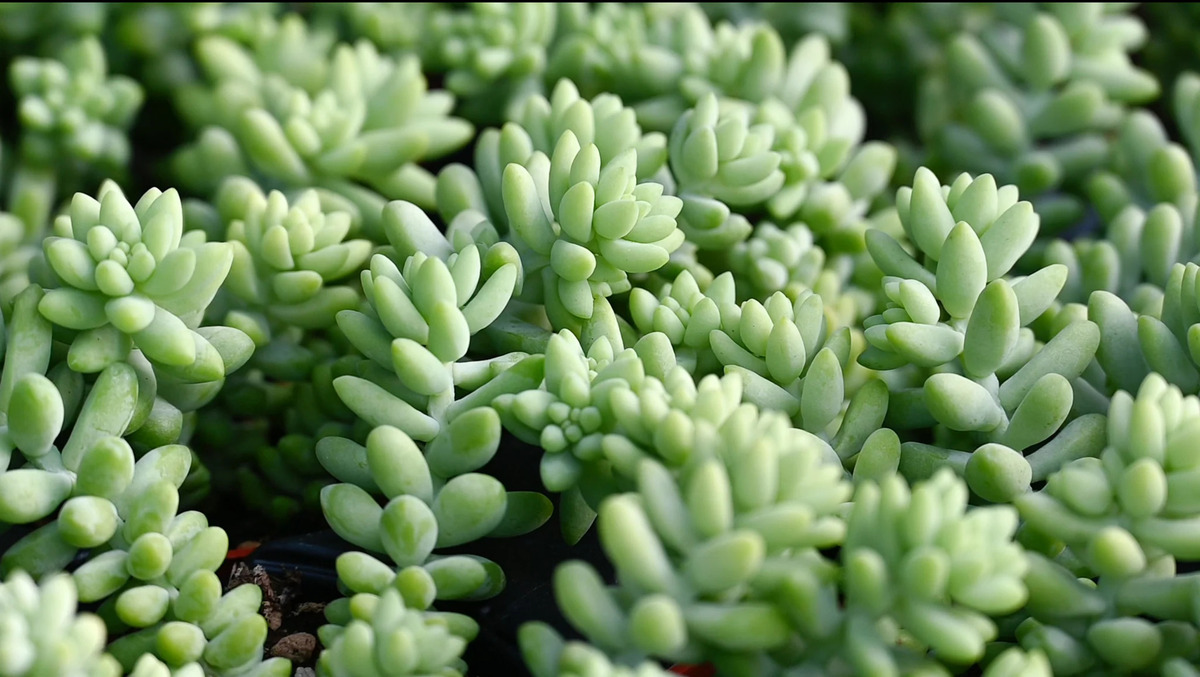Home>Gardening Tips and Tricks>Maximizing Yield>How To Take Care Of Herbs
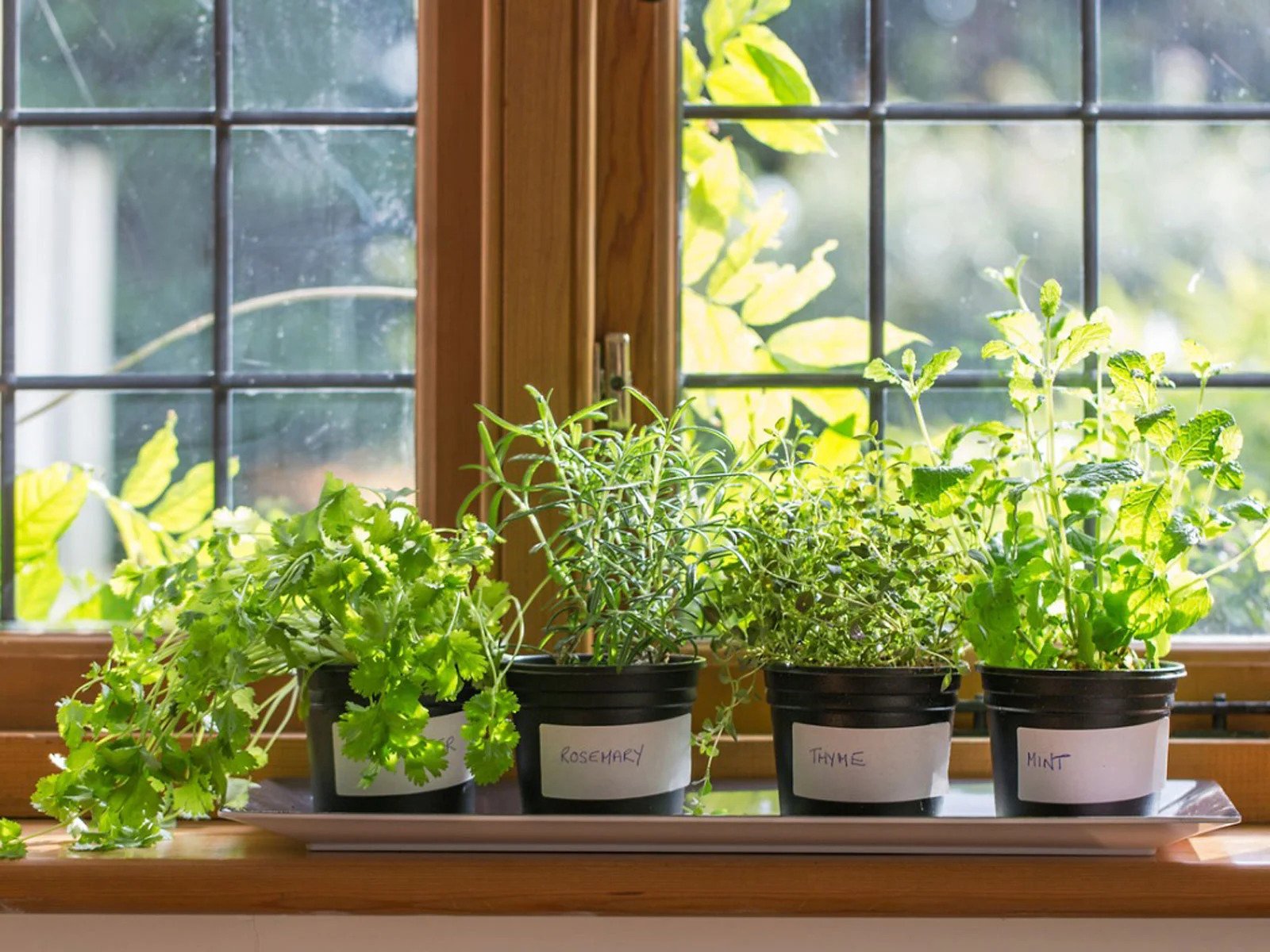

Maximizing Yield
How To Take Care Of Herbs
Modified: January 22, 2024
Learn effective techniques for maximizing yield and caring for your herbs with our comprehensive guide on how to take care of herbs.
(Many of the links in this article redirect to a specific reviewed product. Your purchase of these products through affiliate links helps to generate commission for Chicagolandgardening.com, at no extra cost. Learn more)
Table of Contents
Introduction
Welcome to the world of herbs! Whether you are a seasoned gardener or a novice enthusiast, growing herbs is a rewarding and fulfilling experience. Not only do herbs add flavor and fragrance to your dishes, but they also bring beauty and vitality to your garden or indoor space. But how do you ensure that your herbs thrive and reach their full potential? In this article, we will explore the essential steps to take care of your herbs, from choosing the right herbs to storing them properly.
Before we dive into the specifics, it’s important to understand that each herb has its own unique requirements and preferences. Some herbs enjoy basking in the sunlight, while others prefer a more shaded environment. Likewise, some herbs require more frequent watering, while others are more drought-tolerant. By understanding the individual needs of your herbs, you can create an optimal environment for them to flourish.
So let’s begin our herb-care journey by first discussing how to choose the right herbs for your garden or indoor space. Whether you’re looking to grow herbs for culinary purposes, medicinal uses, or simply for their aesthetic appeal, there are a plethora of options to choose from. Consider factors such as your climate, available space, and personal preferences when selecting your herb varieties.
Once you have chosen your herbs, it’s time to start planting. Whether you opt for seeds or young plants, ensure that your herbs are planted in well-draining soil and positioned in a location that receives adequate sunlight. You’ll also need to provide them with the right amount of water and nutrients to support their growth.
Throughout this article, we will delve into each of these aspects in detail, guiding you on how to best take care of your herbs. By following these tips and techniques, you will not only maximize the yield of your herbs but also enjoy a flourishing garden or a vibrant indoor herb collection. So let’s get started and uncover the secrets to successful herb care!
Choosing the Right Herbs
Choosing the right herbs for your garden or indoor space is the first step towards successful herb care. With countless varieties available, it can be overwhelming to know where to start. But fear not, as we will guide you through the selection process.
Consider your specific needs and preferences when choosing herbs. Are you primarily interested in culinary herbs for seasoning your dishes? Or are you looking to grow medicinal herbs for their healing properties? Some herbs even offer both culinary and medicinal benefits.
Next, take into account your climate and growing conditions. Certain herbs flourish in specific climates, while others are more adaptable. Factors such as sunlight, temperature, and humidity can greatly impact herb growth. Research the ideal conditions for each herb variety to ensure their success.
Take stock of the available space you have for growing herbs. If you have a large garden, you may have more room to experiment with different herbs. However, if you are limited in space, consider growing herbs in containers or vertical gardens.
When it comes to selecting herbs, it’s also important to think about your personal preferences. Do you have a particular fondness for certain flavors or aromas? Are you drawn to herbs with vibrant colors and interesting foliage? Consider what appeals to you aesthetically and gastronomically.
Popular culinary herbs include basil, rosemary, thyme, parsley, and sage. These versatile herbs can be used in a variety of dishes, from pasta sauces to marinades. If you enjoy experimenting in the kitchen, consider growing more exotic herbs such as lemongrass, curry leaf, or Thai basil.
If you are interested in medicinal herbs, options like chamomile, lavender, and echinacea can be a great addition to your herb garden. These herbs have various therapeutic properties and can be used in teas, tinctures, or salves.
Remember, there is no right or wrong choice when selecting herbs. It ultimately comes down to your personal preferences and what you hope to achieve. So take your time, do some research, and choose herbs that will bring you joy and satisfaction.
Planting Herbs
Once you have chosen the right herbs for your garden or indoor space, it’s time to get your hands dirty and start planting. Proper planting techniques are essential for ensuring healthy and thriving herbs.
First, consider the type of herb you have selected. Some herbs, like mint and lemon balm, can be quite invasive and may require containment to prevent them from taking over your garden. For these herbs, planting them in a container or using a barrier like buried edging can help keep them in check.
Before planting, prepare the soil in the designated area. Herbs generally prefer well-draining soil with a slightly acidic to neutral pH level. Ensure that any compost or organic matter is mixed in well with the soil to provide essential nutrients. Remove any weeds or debris from the area to give your herbs a clean start.
Take into consideration the spacing requirements for your herbs. Some herbs, like basil and dill, benefit from being planted close together to create a lush herb bed. Others, like rosemary and sage, prefer more room to spread out. Follow the recommended spacing guidelines for each herb to allow for proper air circulation and growth.
When planting herbs, make sure to dig a hole that is slightly larger than the root ball of the herb. Gently place the herb in the hole and backfill with soil, being careful not to bury the stem too deeply. Lightly pat down the soil around the herb to ensure it is secure.
After planting, water the herbs thoroughly to help settle the soil and provide initial hydration. Throughout the growing season, it’s important to monitor soil moisture levels and provide regular watering as needed. Herbs generally prefer soil that is evenly moist but not waterlogged.
If you are growing herbs indoors, select appropriate containers with drainage holes to prevent waterlogging. Use high-quality potting soil formulated for herbs to ensure optimal growth. Keep in mind that indoor herbs may require additional care, such as supplemental lighting, to compensate for less natural sunlight.
Remember to adjust your planting techniques based on the specific requirements of the herbs you are growing. Read up on any unique planting guidelines for individual herbs to maximize their growth and ensure long-term success.
By following proper planting techniques, you are setting the foundation for strong and healthy herb growth. With the right soil, spacing, and watering, your herbs will have a great start to their journey towards providing you with fresh flavors, aromas, and countless culinary or medicinal possibilities.
Providing Adequate Light
Light is one of the most crucial factors for the healthy growth of herbs. Providing adequate light ensures that your herbs receive the energy they need for photosynthesis, which is vital for their overall health and productivity.
Most herbs thrive in full sun, which typically means at least six hours of direct sunlight per day. However, it’s important to note that different herbs have varying light requirements. Some herbs, such as basil and rosemary, love basking in the sun and require full sunlight to reach their full potential. On the other hand, herbs like parsley and cilantro can tolerate some shade and may benefit from partial sun or dappled shade.
If you have a garden, choose a location that receives ample sunlight throughout the day. Consider any existing structures or trees that may cast shade on certain areas of your garden, and position your herbs accordingly. Keep in mind that the sun’s angle may vary throughout the year, so make seasonal adjustments as needed to ensure your herbs receive adequate light.
For indoor herb gardens, place your potted herbs near a south-facing window if possible. South-facing windows usually receive the most sunlight throughout the day. East or west-facing windows can also provide sufficient light, though it may be less intense. If natural light is limited, consider supplementing with artificial grow lights to ensure your herbs receive the necessary light levels.
When positioning your herbs indoors, avoid placing them too close to windows with drafts or extreme temperature changes. Herbs are sensitive to temperature fluctuations, so it’s important to maintain a consistent and moderate climate for them to thrive.
Regularly monitor your herbs for signs of insufficient light. If you notice your herbs becoming leggy, with elongated stems and sparse foliage, it is an indication that they are not receiving enough light. In such cases, consider relocating them to a sunnier spot or providing supplemental lighting.
On the other hand, if your herbs are receiving too much direct sunlight, they may show signs of stress, such as wilting or scorched leaves. In such cases, providing shade during the hottest hours of the day or moving them to a spot with filtered light can help protect them from intense sun exposure.
Remember that finding the right balance of light for your herbs is crucial. It’s also important to rotate your potted herbs regularly if they are placed near windows. This will ensure even light distribution and prevent one side of the herb from becoming lopsided or weak.
By providing adequate light, you will help your herbs grow vigorously and produce abundant foliage and flavorful leaves. So, give your herbs the gift of sunshine, and they will reward you with a bountiful harvest of aromatic and tasty delights.
Watering Herbs
Water is essential for the growth and survival of herbs, and proper watering techniques are crucial for maintaining their health. While herbs have different water requirements, there are general guidelines that can help you ensure your herbs receive adequate hydration.
When it comes to watering herbs, it’s important to strike a balance. Overwatering can lead to root rot and other fungal diseases, while underwatering can result in stunted growth and wilting. The goal is to keep the soil consistently moist, but not overly saturated.
Before watering, always check the moisture level of the soil. Insert your finger about an inch deep into the soil near the base of the herb. If the soil feels dry, it’s time to water. If it feels damp, hold off on watering for a little longer.
When watering herbs, aim to wet the soil thoroughly, ensuring that the water reaches the roots. This encourages the roots to grow deeper and establish a strong foundation. Avoid shallow watering, as it can lead to weak root development and make your herbs more susceptible to drought.
Avoid splashing water on the leaves to prevent fungal diseases. Watering in the morning or early afternoon allows the foliage to dry before cooler evening temperatures, reducing the risk of diseases caused by prolonged leaf wetness.
Outdoor herbs generally require more frequent watering, especially during hot and dry periods. As a general rule, herbs in containers will dry out more quickly than those planted in the ground, so it’s important to monitor their moisture levels regularly and adjust your watering frequency accordingly.
Indoor herbs may require less frequent watering due to the controlled environment, but it’s essential to keep an eye on their moisture levels as well. Indoor heating or air conditioning can create dry conditions that may necessitate more frequent watering. To maintain proper moisture, place a tray filled with water beneath the herb pots or use a humidifier to increase humidity levels around your indoor herbs.
Utilize mulch around your outdoor herbs to conserve moisture and reduce weeds. Organic mulches, such as straw or shredded bark, can help retain moisture while providing insulation to the soil. Mulching also helps regulate soil temperature, keeping the roots cool during hot summer months.
Remember that different herbs have different water requirements, so it’s essential to understand the specific needs of each herb variety. Herbs like basil, mint, and chives prefer consistently moist soil, while herbs like thyme and rosemary are more drought-tolerant and prefer slightly drier conditions.
Observing the condition of your herbs is vital in determining their watering needs. If the leaves appear dull or droopy, it may indicate underwatering. However, if the leaves appear yellow or wilted, it may indicate overwatering. Adjust your watering routine accordingly to maintain a healthy balance.
By watering your herbs properly and providing them with the right amount of moisture, you are ensuring their overall well-being. Remember that consistent and mindful watering is key to promoting robust growth and flavorful foliage.
Fertilizing Herbs
Fertilizing herbs is an important aspect of herb care that helps provide them with the necessary nutrients for vigorous growth and abundant flavor. While herbs generally have lower nutrient requirements compared to other plants, they still benefit from occasional fertilization to maintain their health and vitality.
Before applying any fertilizer, it’s important to understand the different types of fertilizers available. Organic fertilizers, such as compost, well-rotted manure, or fish emulsion, are a popular choice for herb gardeners as they provide a slow-release source of nutrients and improve soil structure. Synthetic fertilizers, on the other hand, are chemically formulated and provide a quick-release source of nutrients.
When fertilizing herbs, it’s crucial to follow the instructions provided by the fertilizer manufacturer and to apply the recommended amount. Over-fertilization can lead to excessive leaf growth, reduced flavor potency, and can even harm the plant. A general rule of thumb is to start with a light application and gradually increase strength if necessary.
Most herbs benefit from a balanced fertilizer with equal nitrogen (N), phosphorus (P), and potassium (K) content. Nitrogen promotes leaf and stem growth, phosphorus aids in root development and flowering, while potassium contributes to overall plant health and stress tolerance.
For established herbs, a slow-release fertilizer applied in early spring or early summer is usually sufficient. A single application can provide ongoing nutrient release over several months. Alternatively, you can use liquid fertilizers, applying them every 4-6 weeks during the growing season.
If your herbs are growing in containers, they may require more frequent fertilization due to the limited soil volume and nutrients. Begin fertilizing container herbs a few weeks after planting, using a balanced, water-soluble fertilizer at half the recommended strength. Gradually increase the frequency and strength of the fertilizer as the herbs develop.
Some herbs benefit from specific fertilization techniques. For example, heavy feeders like basil and dill may appreciate a balanced liquid fertilizer every other week during their peak growing season. On the other hand, herbs like rosemary and thyme are more moderate feeders and may require less frequent fertilization.
Remember to water your herbs before applying fertilizer to prevent root burn. Avoid fertilizing herbs during hot, dry periods, as chemicals may harm the plant or evaporate too quickly. It’s best to fertilize herbs on a cool, overcast day or in the evening when temperatures are lower.
Organic matter, such as compost or well-rotted manure, can be added to the soil around herbs as a natural and gentle fertilizer. These organic amendments not only contribute essential nutrients but also improve soil structure and increase moisture-retention capabilities.
Regularly monitor your herbs after fertilization to ensure they are responding well. Look for signs of nutrient deficiency, such as yellowing or stunted growth, which may indicate the need for additional fertilization. Adjust your fertilization routine accordingly based on the specific needs of your herbs.
By providing proper fertilization, you are bolstering your herbs’ growth and enhancing their flavor profiles. With the right balance of nutrients, your herbs will flourish and provide you with a bountiful harvest of fresh and aromatic delights.
Pruning and Harvesting Herbs
Pruning and harvesting herbs are essential tasks that promote healthy growth, improve aesthetics, and provide a continuous supply of fresh herbs for culinary or medicinal use. Proper techniques for pruning and harvesting will help your herbs thrive and maximize their yield.
Pruning helps to stimulate new growth, maintain the desired shape of the herb plant, and prevent it from becoming leggy or overgrown. It also encourages the production of essential oils, which contribute to the flavor and fragrance of the herbs.
When it comes to pruning, it’s best to do it regularly but in moderation. Avoid drastic pruning as it may shock the plant and hinder its ability to recover. Instead, opt for gentle and gradual pruning throughout the growing season.
Start by removing any dead or damaged leaves or stems, as these can attract pests or harbor diseases. Use clean and sharp pruning shears to make clean cuts, as jagged or torn cuts can create entry points for infections.
Pinching back the tips of your herbs is another effective pruning technique. This encourages branching and creates a bushier plant. Pinch just above a set of leaves, taking care not to remove too much foliage at once.
Regular harvesting of your herbs not only promotes growth but also ensures that the plant remains productive and maintains its flavor and aroma. Harvesting herbs at the right time is crucial to get the most flavor and potency from the leaves.
Most herbs are best harvested in the morning, after the dew has dried but before the heat of the day. This is when the essential oils are at their peak concentration. Avoid harvesting herbs when they are wet or after rainfall, as the excess moisture can diminish the flavor and quality of the leaves.
For leafy herbs like basil, cilantro, or parsley, harvest the outer leaves or stems first, starting with the oldest ones. This encourages continuous growth and prevents the herbs from becoming top-heavy or leggy.
Woody herbs like thyme, rosemary, and sage can be harvested by snipping sprigs or individual leaves as needed. Cut just above a leaf node, where new growth will emerge. This ensures that the plant retains its shape and vitality.
Regularly harvesting your herbs also helps prevent them from flowering. While the flowers may be visually appealing, they often signal the end of the herb’s growth cycle and can diminish the flavor and aroma of the leaves.
It’s important to note that different herbs have different harvesting techniques and timing. Do some research on the specific herbs you are growing to understand their individual requirements for pruning and harvesting.
By incorporating regular pruning and harvesting into your herb care routine, you are promoting healthier and more productive plants. Not only will you have a constant supply of fresh herbs for your culinary creations or herbal remedies, but you will also enjoy the delight of maintaining thriving and visually pleasing herb plants.
Managing Pests and Diseases
As with any garden or plant, herbs are susceptible to pests and diseases that can hinder their growth and diminish their vitality. However, with proper pest and disease management, you can protect your herbs and ensure their continued health and productivity.
Prevention is the first line of defense when it comes to managing pests and diseases. By creating and maintaining a healthy growing environment for your herbs, you can minimize the risk of infestations and infections. Start by providing your herbs with proper sunlight, water, and nutrition to promote strong and resilient growth.
Avoid overcrowding your herbs, as crowded plants can create a favorable environment for pests and diseases. Proper spacing allows for adequate air circulation, which helps keep foliage dry and minimizes the risk of fungal infections.
Regularly inspect your herbs for any signs of pests or diseases. Catching issues early on can prevent them from spreading and becoming more severe. Look out for discolored leaves, wilting, abnormal growth, holes, or webs on the plants.
One of the most common pests that affect herbs is aphids. These tiny insects feed on plant sap and can cause stunted growth and deformities. Organic methods to control aphids include manually removing them with a strong jet of water or using insecticidal soaps or neem oil. Ladybugs and lacewings are natural predators that can help keep aphid populations in check.
Other common pests that may target herbs include spider mites, whiteflies, and caterpillars. Regularly inspect the undersides of leaves for signs of these pests. Introducing beneficial insects like predatory mites or using organic pest control solutions can help manage these unwelcome visitors.
Fungal diseases, such as powdery mildew and root rot, can also affect herbs. To prevent fungal infections, avoid overhead watering and ensure proper air circulation. If you notice signs of fungal growth, remove and destroy the affected plant parts promptly. Organic fungicides like copper-based sprays can also be used as a preventive measure.
If your herbs are affected by a severe pest or disease infestation, it may be necessary to resort to chemical pesticides or fungicides as a last resort. However, it’s important to follow the instructions and guidelines provided by the manufacturer and to use these products sparingly and responsibly.
Cultural practices can also help prevent and manage pests and diseases. Inspect new herb plants before introducing them to your garden or indoor space to avoid bringing in any pests or diseases. Clean gardening tools regularly to prevent the spread of pathogens from one plant to another.
Regularly pruning your herbs helps improve air circulation and reduces the risk of pests and diseases. Remove any diseased or dead plant material promptly to prevent the spread of infections.
Vigilance and proactive management are key to keeping pests and diseases in check. Regular monitoring, prompt action, and adopting organic pest and disease control methods will help you maintain a healthy and thriving herb garden.
Storing Herbs Properly
Properly storing herbs is crucial to preserve their flavor, aroma, and potency for future use. Whether you have harvested an abundant crop or purchased fresh herbs from the store, correct storage techniques will help maintain their quality and extend their shelf life.
One of the simplest and most effective ways to store herbs is by drying them. Air drying is suitable for herbs with low moisture content, such as thyme, rosemary, and oregano. Gather small bunches of herbs and hang them upside down in a cool, well-ventilated area. Once completely dry, strip the leaves from the stems, and store them in airtight containers away from direct light and moisture.
Herbs with higher moisture content, like basil, parsley, or cilantro, are better preserved by freezing. Blanch the herb leaves for a few seconds in boiling water, then transfer them to an ice bath to preserve their color and flavor. Pat dry the blanched leaves and store them in freezer-safe bags or containers. Alternatively, you can chop the herbs and freeze them in an ice cube tray with a little water or oil for easy portioning.
Another option for storing herbs is by preserving them in oils or vinegars. Chop the herbs finely and place them in a sterilized jar. Cover them with oil or vinegar, ensuring that the herbs are fully submerged. Seal the jar tightly and store it in a cool and dark place. The flavored oils and vinegars can be used for dressings, marinades, or added to dishes.
If you prefer the convenience of fresh herbs, you can store them in the refrigerator. Place the fresh herb sprigs in a glass of water, similar to flowers in a vase. Cover the top with a plastic bag and secure it loosely to create a humid environment. Change the water every few days and trim the stems if they start to wilt. This method can keep your herbs fresh for up to a week.
When storing dried herbs, it’s important to label and date the containers to keep track of their freshness. Store them in a cool, dry, and dark place to maintain their flavor and potency. Avoid storing herbs near the stove or other heat sources, as heat and light can degrade their quality.
To prevent cross-contamination of flavors, store each herb separately or group compatible herbs together. For example, strong-flavored herbs like sage or rosemary may overpower more delicate herbs like mint or cilantro if stored together.
When using frozen herbs, remember that they are best utilized in cooked dishes where their texture may not be a significant factor. Freezing can cause the cell walls to break down, resulting in a softer texture when thawed.
Properly stored herbs will retain their flavors and aromas, enhancing your culinary creations long after harvest. So, take the time to store your herbs correctly, and you’ll be rewarded with the delight of adding fresh herbs to your dishes throughout the year.
Conclusion
Caring for herbs is a delightful and rewarding experience that allows you to enjoy the flavors, aromas, and beauty they bring to your life. By following the steps outlined in this article, you can foster healthy growth and maximize the yield of your herbs.
Choosing the right herbs, planting them in well-draining soil, and providing adequate sunlight are crucial in establishing a solid foundation for herb growth. Watering herbs appropriately and fertilizing them when needed ensures they receive the necessary hydration and nutrients for optimal development.
Pruning herbs regularly and harvesting them at the right time promotes bushier growth, maintains their shape, and provides a constant supply of fresh herbs for your culinary or medicinal needs. Managing pests and diseases is essential to protecting the health of your herbs, preventing infestations, and ensuring their continued productivity.
Lastly, storing herbs properly preserves their flavors, aromas, and potency, allowing you to enjoy their benefits long after harvest. Whether drying, freezing, or preserving them in oils or vinegars, these storage methods help you make the most of your herb harvest or store-bought herbs.
Remember to take the time to understand the specific requirements of each herb you grow, as they may vary in terms of light, water, and fertilization needs. By providing a tailored approach to care, you will create an optimal environment for your herbs to thrive.
Engaging with your herbs on a regular basis, observing their growth, and adapting your care routine based on their needs will bring you closer to nature and deepen your connection to the beautiful world of plants.
So, whether you have a fresh herb garden in your backyard or a collection of potted herbs on your kitchen windowsill, enjoy the journey of nurturing these wonderful plants. With your care and attention, your herbs will not only provide you with an abundance of fragrance, flavor, and health benefits but also enhance your overall gardening experience.

